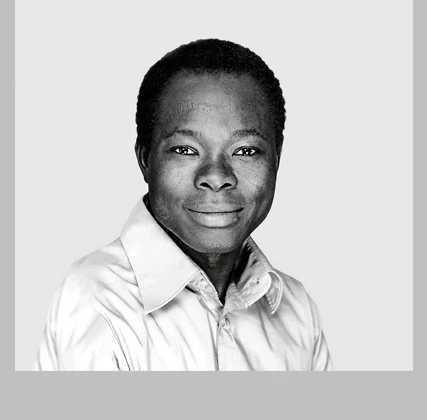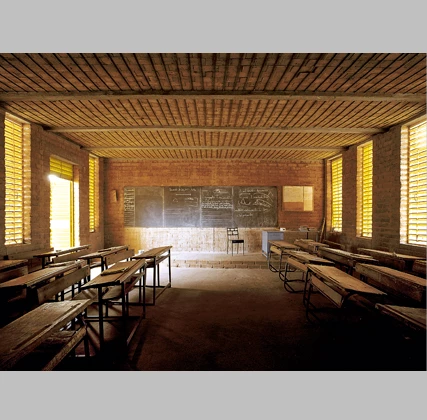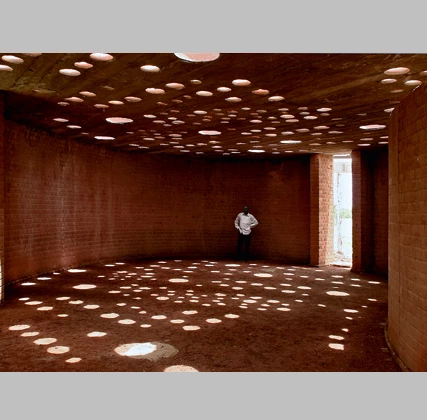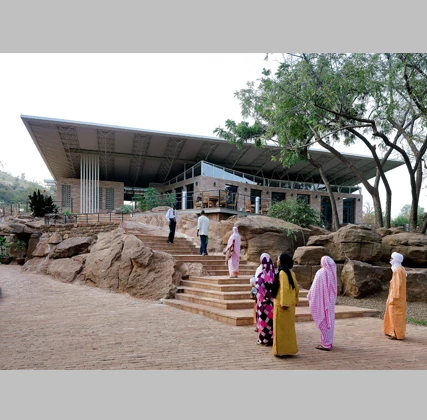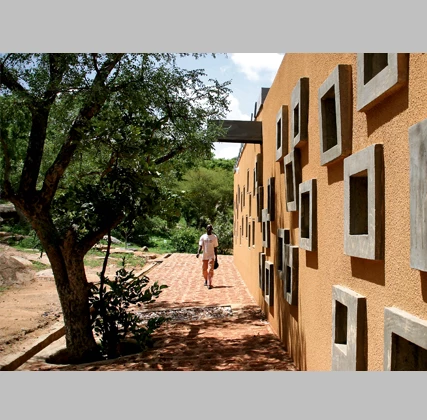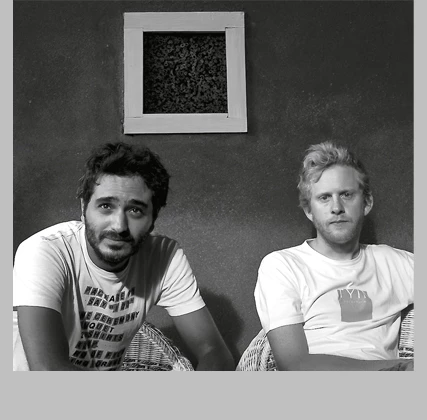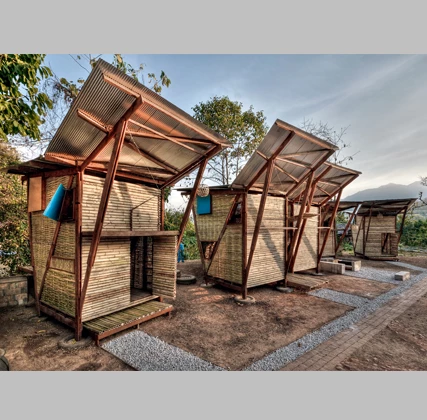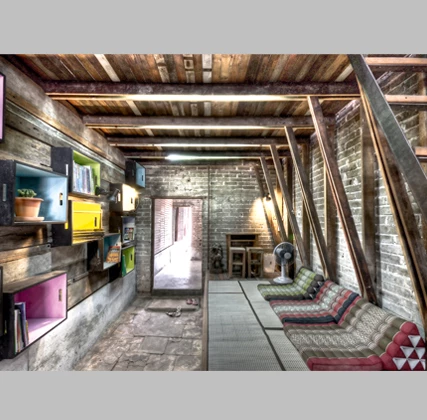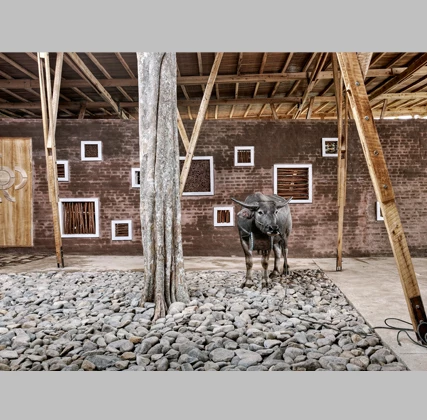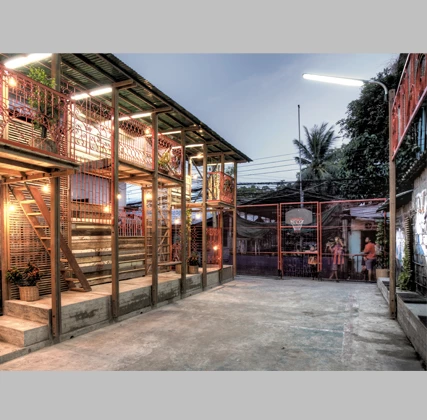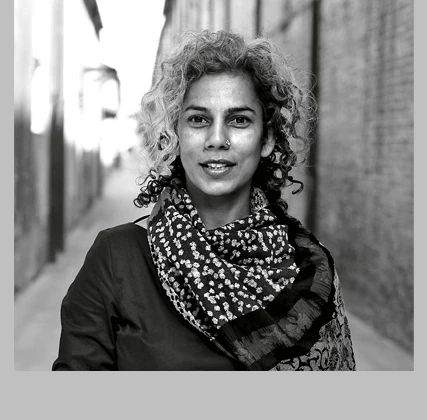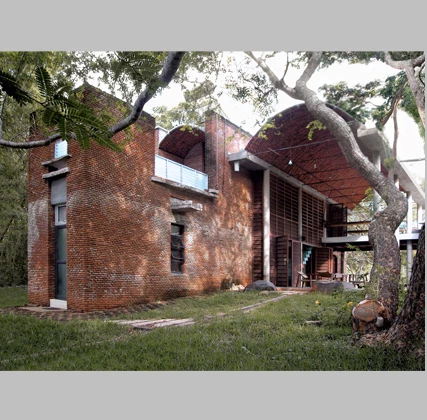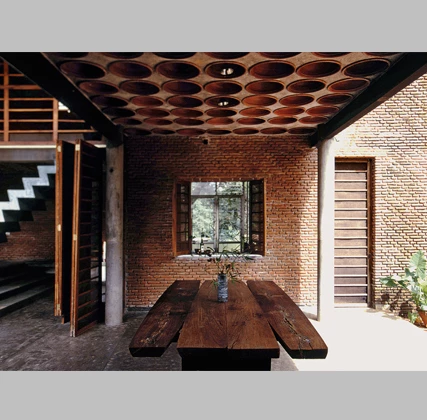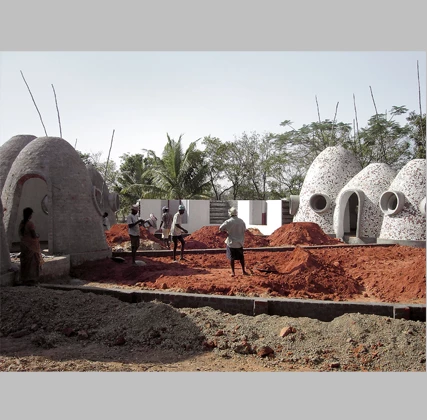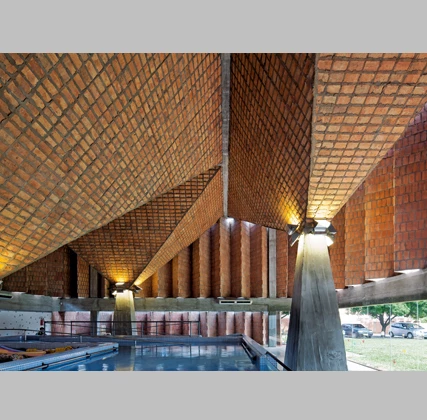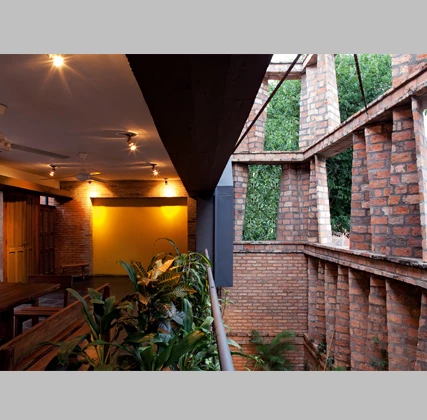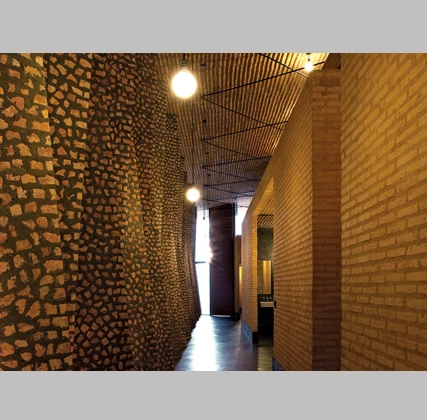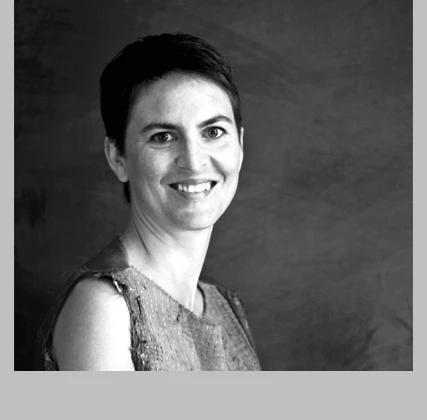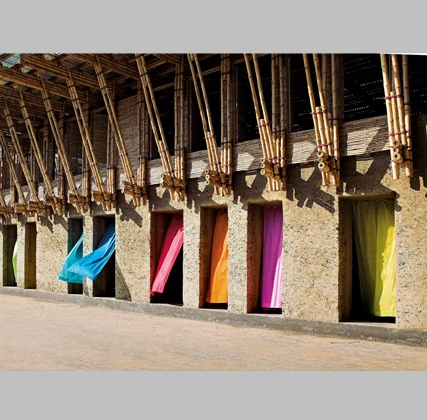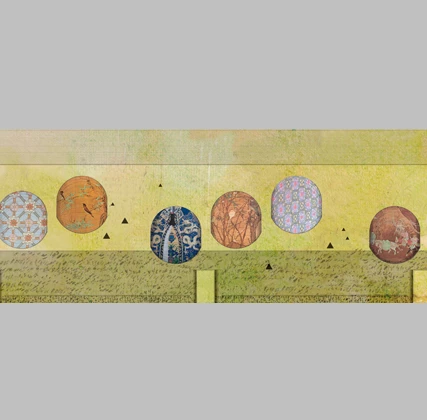Under the title ‘The Architect is Present,’ the exhibition shows the work of five influential international studios who have turned austerity into their ethic and aesthetic motto. With offices located in five continents, these young architects work in underprivileged contexts, proving that scarcity of means can stimulate technical inventiveness and community participation, and indeed become the basis for a responsible architecture where the vocation of service does not exclude beauty and emotion. From Norway and Germany to Burkina Faso, and from Paraguay to Australia passing through India or Thailand, these five studios have built social housing, rural schools or community centers with an extraordinary economy of means, admirable adaptation to collective needs and exemplary material execution, inspiring the very numerous architects who today, in Spain as in many other countries, seek to reconcile moral commitment with artistic excellence.
To communicate their ideas more effectively, each one of the architects will also lead a two-week workshop with a small group of recent graduates or senior architecture students, with the permanent assistance of expert mentors. These workshops will be held in the exhibition space proper, thereby hoping to promote contact with visitors. The material produced in the five workshops will be gradually added to the exhibition, whose contents will grow with the results of this professional and academic dialogue. And aiming to further disseminate the exhibition purpose – to participate actively in the current movement to regenerate the ties between architecture and society –, the five architects will deliver several lectures at different architecture schools around Spain, conveying their message of responsibility and optimism to the younger generation.
The title of the exhibition evokes Marina Abramovic’s performance at the Museum of Modern Art in New York in the Spring of 2010, ‘The Artist is Present,’ in which for more than 700 hours the artist sat motionless before those visiting the monographic exhibition. Here, however, the value of presence is not asserted through the serene impassiveness of artistic ataraxia, but through personal interaction and architectural dialog: in the workshops that take place in front of the gallery visitors, or in the lectures the architects will give at a number of architecture schools in the country, which together wish to turn the exhibition into a proactive manifesto, going beyond the event’s boundaries of space and time to become part of a collective transformation process.
With the goal of strengthening this communicative purpose, the exhibition design by the architect Jesús San Vicente lets the workshop-leaders speak via comic bubbles, transmitting ideas, projects and desires through a pop aesthetic that is rounded off with photographs of their works and the tactile proximity of the essential materials used in them: an intellectual and emotive immediacy in the exhibition space that hopes to resonate in larger contexts, and that even extends itself to remote geographies through three-month paid internships in the offices of the architects for some of the workshop participants, thereby aiming to establish long-lasting ties with professional and social environments that are as distant as they are different, and which look particularly stimulating for a country that ponders on its future. The Architect is Present

